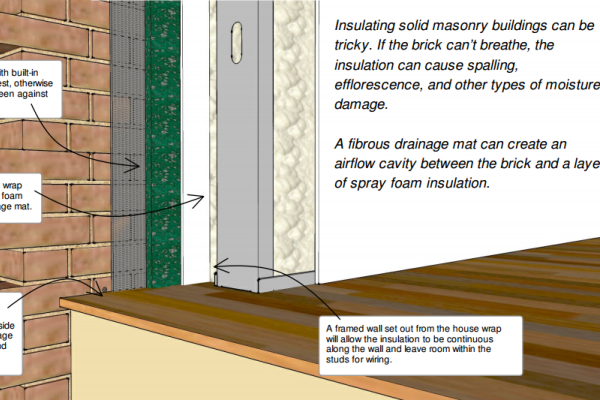Letting the brick dry evenly is the key for old masonry walls that want to leak less energy
Insulating solid masonry buildings can be tricky. If the brick can’t breathe, the insulation can cause spalling, efflorescence, and other moisture damage.
A fibrous drainage mat can create an airflow cavity between the brick and a layer of spray foam insulation. Drainage mat with built-in bug screen (such as Mortair Vent) is best, otherwise install insect screen against the brick first.
Step-by-step:
- Fibrous drainage is then installed and held in place with masonry anchors. A layer of housewrap keeps the spray foam out of the drainage mat.
- A framed wall set out from the housewrap will allow the insulation to be continuous along the wall and leave room within the studs for wiring.
- Of course, drywall goes on the inside of the studs.
- For any water that is driven into the walls from rain and sun, 1/4 inch holes are drilled angling down to the outside to provide drainage at the floor level.
- At the top of the wall, insulation should completely cover the rim joist.
Multiple layers of breathable sheet goods provide a ventilation space, drainage, and a surface for a spray foam to make an energy-efficient masonry wall that thumbs its nose at moisture.
—This detail comes from research presented by Dr. Kim Pressnail of the University of Toronto, Department of Civil Engineering at the Westford Symposium on Building Science in August 2015.






